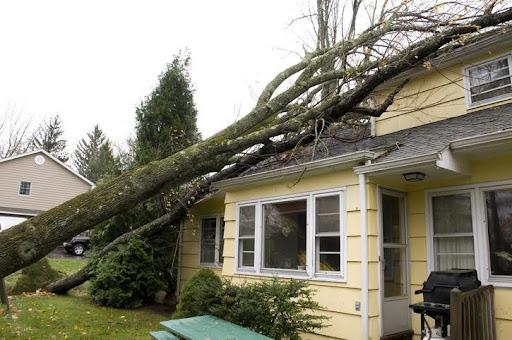When is Hurricane Season?
June 1, 2024

Navigating Hurricane Season
Hurricanes are one of nature’s most devastating events, bringing high winds and storm surge that can cause loss of life and severe property damage.
We’re delving into when peak hurricane season starts, how hurricanes form, and what you can expect if a hurricane strikes your property – and who you can turn to for help.
When is Hurricane Season?
Peak hurricane season typically varies depending on the region. In the Atlantic Basin, including the Caribbean Sea and the Gulf of Mexico, hurricane season officially runs from June 1 to November 30. However, hurricanes can occur outside of this timeframe, though it's less common. In the Eastern Pacific, hurricane season dates span from May 15 to November 30. These are the periods when conditions are most conducive for the formation and intensification of tropical cyclones.
Factors Influencing Hurricane Formation
Hurricanes are rated on the Saffir-Simpson Hurricane Wind Scale, which includes five categories based on the storm's sustained wind speeds. The scale also estimates potential property damage, ranging from "some damage" to "catastrophic."
Several factors contribute to the formation and severity of hurricanes, including:
Warm ocean waters: Hurricanes form over warm ocean waters with temperatures typically above 80 degrees. Warm water is the energy the storm needs to develop and strengthen.
Moisture: Hurricanes require moist air to fuel their growth. When warm, moist air rises from the ocean's surface, it condenses into clouds, releasing latent heat that further fuels the storm.
Instability in the atmosphere: Hurricanes thrive in an environment with unstable atmospheric conditions, where warm air rises rapidly and creates strong updrafts. This instability allows the storm to grow vertically.
Low wind shear: Wind shear, or the change in wind speed and direction with altitude, can disrupt the structure of a developing hurricane. Low wind shear allows the storm to maintain its organization and strengthen.
Coriolis effect: The Coriolis effect, caused by the Earth's rotation, helps to spin developing tropical cyclones.
Pre-existing disturbance: Hurricanes often form from pre-existing weather disturbances, such as tropical waves or disturbances, which provide a starting point for development.
These factors interact in complex ways, and their combination determines whether a tropical disturbance evolves into a hurricane and how intense it becomes.
Regions Prone to Hurricane Impact
Several regions around the world are prone to the impact of hurricanes, but in the United States, the most severe hurricanes affect the Atlantic Basin. This includes the Caribbean Sea, the Gulf of Mexico, and the North Atlantic Ocean, meaning the Gulf Coast and Southeastern states are frequently affected by hurricanes.
Recovering from Hurricane Damage
Recovering from hurricane damage can be a long and challenging process for homeowners. Here are some things you can expect:
Assessment of Damage: If a hurricane strikes your property, you’ll need to assess the extent of the damage, including structural damage to the house, water damage, damage to personal belongings, and any potential hazards such as fallen trees or downed power lines.
Insurance Claims: You will typically need to file insurance claims to cover the cost of repairs and replacements. This process may involve documenting the damage, working with insurance adjusters, and providing evidence of ownership for damaged belongings.
Repairs and Reconstruction: Depending on how bad the damage is, you might need to make repairs or even reconstruct parts of your home, such as the roof and windows. Hurricanes often leave behind significant debris, including fallen trees, damaged building materials, and household items, so part of the cleanup process could involve debris removal and disposal. A professional restoration company can help clear away the debris and other materials so that underlying damage to the structure can then be addressed.
Temporary Housing: If a hurricane renders your home inhabitable, you might need to find temporary housing arrangements while repairs are being made. This could involve staying with family or friends, renting temporary accommodations, or seeking assistance from relief organizations.
Emotional Impact: Recovering from hurricane damage can be emotionally taxing, especially if you’ve experienced significant losses or displacement. If you’ve been affected by a hurricane, seek support from family, friends, or mental health professionals if needed.
Preventing Future Damage: After recovering from hurricane damage, plan on taking steps to mitigate future risks, such as reinforcing your home’s resilience to storms, purchasing flood insurance, and creating an emergency preparedness plan.
Give DRYmedic a Call for Hurricane Damage Restoration
When storms like hurricanes strike, DRYmedic is here to assist in cleanup and damage restoration, including water extraction, structural repairs, and more. We’ll help you recover from storm damage quickly and restore your home to its previous condition. If your home has been hit by a hurricane and you need help, give DRYmedic a call: (754) 206-6436.